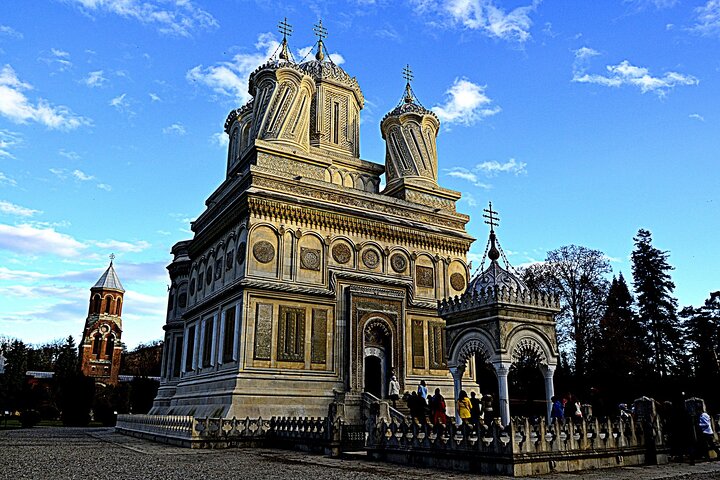Exploring the Legacy of Vlad the Impaler: A Romanian Odyssey
Drawn by the allure of Romania’s medieval history, I embarked on a journey to explore the sites associated with Vlad the Impaler. This tour promised a deep dive into the life of a ruler whose legacy is shrouded in both history and legend.
A Journey Through Time: The Royal Court of Târgoviște
As a former professor of European history, I have always been fascinated by the intricate tapestry of events and personalities that have shaped the continent. My recent journey to Târgoviște, Romania, was a deeply enriching experience, as I embarked on the Vlad the Impaler Tour. This private tour promised to unveil the historical layers of Vlad the Impaler’s life, a figure both feared and revered in Romanian history.
Our first stop was the Royal Court of Târgoviște, a site that resonated with the echoes of medieval power and intrigue. Walking through the remnants of the court, I could almost hear the whispers of the past, the clinking of armor, and the hushed conversations of courtiers. The architecture, a blend of Byzantine and local styles, spoke volumes of the cultural exchanges that occurred during Vlad’s reign. The guide’s detailed narration brought to life the strategic importance of Târgoviște as a royal residence and a center of political power.
The court’s ruins, though weathered by time, still held an aura of majesty. I was particularly struck by the Chindia Tower, a symbol of Vlad’s legacy, standing tall against the backdrop of the Carpathian Mountains. It was here that Vlad the Impaler, a ruler known for his fierce defense of his realm, orchestrated his campaigns against the Ottoman Empire. The visit was a poignant reminder of the complexities of leadership and the indelible mark Vlad left on Romanian history.
The Splendor of Peles Castle
Our journey continued to Peles Castle, nestled in the picturesque town of Sinaia. As someone who has spent years studying European architecture, I was eager to witness this masterpiece of German new-Renaissance design. The castle, surrounded by the lush greenery of the Bucegi Mountains, was a sight to behold. Its ornate facades and intricate woodwork were a testament to the artistic vision of King Carol I, who commissioned its construction.
Inside, the castle was a treasure trove of art and history. Each room was a carefully curated display of opulence, from the grand armory to the exquisite music room. The guide’s insights into the castle’s history, including its role as a summer residence for the Romanian royal family, added depth to the experience. I found myself particularly drawn to the library, with its secret passageways and vast collection of rare books, a haven for any history enthusiast.
Peles Castle is not just a monument to architectural brilliance; it is a symbol of Romania’s cultural renaissance in the late 19th century. The visit was a reminder of the country’s rich heritage and the enduring legacy of its monarchs. As I wandered through its halls, I couldn’t help but reflect on the interplay between power, art, and history that defines so much of Europe’s past.
The Enigma of Snagov Monastery
The final leg of our tour took us to Snagov Monastery, a serene retreat on a tiny island in a lake just outside Bucharest. According to local tradition, this is the burial place of Vlad the Impaler, the inspiration for Bram Stoker’s Dracula. The monastery, with its tranquil surroundings and ancient frescoes, offered a stark contrast to the tumultuous life of the man it purportedly houses.
As I stood before the supposed tomb of Vlad, I was struck by the layers of myth and reality that surround his legacy. The guide shared tales of Vlad’s exploits, his brutal methods of maintaining order, and the folklore that has immortalized him as a vampire count. It was a fascinating exploration of how history and legend intertwine, shaping our perceptions of the past.
The monastery itself, with its Byzantine architecture and serene atmosphere, was a fitting conclusion to our journey. It served as a reminder of the spiritual dimensions of history, where the lives of rulers and the beliefs of the people converge. As we departed, I felt a profound sense of connection to the stories and landscapes that define Romania’s rich historical tapestry.










































